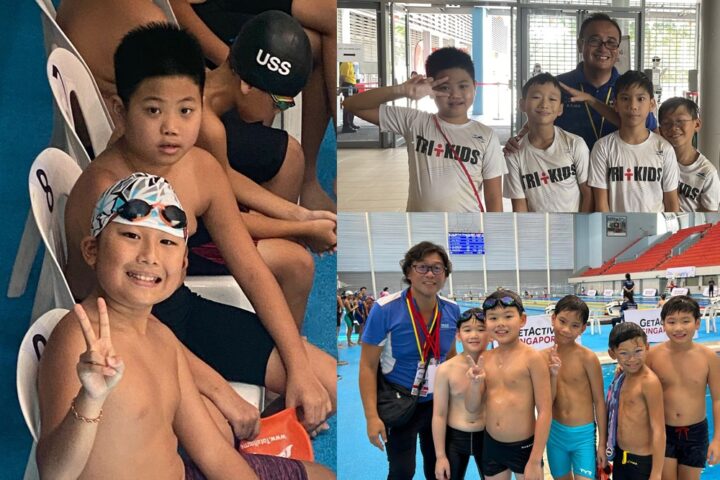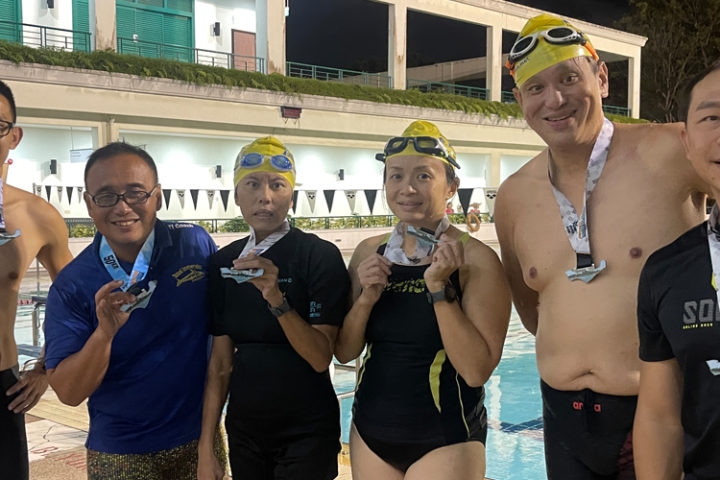The 2 Key Ingredients for a Faster Freestyle
In this article, we’ll introduce you to the two main concepts that contribute to a faster freestyle stroke. This post is part of a series on How to Improve Your Freestyle, in which we go over the essential ideas and techniques that will help you optimize your freestyle, so you can go from being a beginner to an experienced, smooth and confident swimmer.
We’ll start with the basic premise: a large part of being a good swimmer comes from the combination of optimal body mechanics (how your body moves and functions) and efficient hydrodynamics (the way that water moves). If you can integrate the two, your stroke is likely to be smoother and more efficient—meaning you can swim faster, longer and better.
This series will take you through some of the foundational concepts that underlie how human bodies move in water: balance, drag, propulsion, timing, stroke length and cadence. If these seem a little hazy to you right now, don’t worry! We will take you through them step-by-step so you’re clear on what they are and how they apply to your swims.
The main takeaway is: by understanding these concepts, you will also understand the fundamental skills you need to be a better swimmer. Some of these concepts may come intuitively to you, and you might already be doing them, while others may require practice. Knowing the difference will also help you understand where you’re going wrong and how to fix it.
Finally, future articles in this series will also help you craft a training plan, which you can use to easily plan your swims, choose focal points to work on, monitor your progress and achieve your goals. Whether you’re a beginner swimmer, an aspiring athlete or already in competitive training, you can use the ideas in this series to improve your speed, your technique and your form.
1. Drag and Propulsion: Moving Forwards and Backwards
Let’s quickly dip into the basics. As you know, water provides much more resistance against the body than air—you’ll recognize this, because you’ve felt how much harder it is to walk through water than to walk on land. That felt sense of difficulty is water resistance, or drag, named so because it literally drags us backwards. Whenever we swim, we are essentially trying to increase how far we move through the water (propulsion) while decreasing how much resistance we create by our movements (drag). All movement in water creates drag—there’s no avoiding it. This is why streamlining is so important (more on that in future posts). Too much movement means extra drag, but too little movement means no propulsion. Ultimately, we are striving for a delicate balance between drag and propulsion. This is why in swimming we prioritize efficient movement, that propels us forward and minimizes drag at the same time.
2. Stroke Length (SL) and Strokes per Length (SPL)
So how do we measure the efficiency of our swim? The first concept we need to understand here is stroke length (SL). This is the distance that you travel forward in the water using a single stroking action (ie. one arm pull). You can think of it as the underwater equivalent of your stride length, which is the distance that you travel on land with a single step.
Obviously, stroke length is dependent on your height, so people who are taller will have both a longer stride length and a longer stroke length. Since you can’t change your height, what we do instead is try to optimize the way that you use your body (more propulsion, less drag) so that you can get the longest stroke length possible for your body.
For example, if your current stroke length is 1m, improving it to 1.2m means you’ll need fewer strokes to travel the same distance (in a 50m pool, 45 strokes at 1m vs. 38 strokes at 1.2m). Fewer strokes means reduced drag, so you will also get a faster time. The bottom line is: if you can travel further with each stroke, you will need fewer strokes to swim both longer and faster. In other words, to gain speed or distance, you don’t necessarily need to swim more strokes, but rather to swim better, more efficiently.
Since it’s a little tricky to measure the length of each stroke directly, what we do instead is to count the number of strokes it takes you to swim a particular distance, usually a single length of the pool. This measure is called your Strokes per Length (SPL). So, whether you swim in a 25m or a 50m pool, you simply need to count how many strokes it takes you to get from one end of the pool to the other. Remember that each time your arm enters the water counts as one stroke. If you are able to swim more than one lap, it’s ideal to count strokes over a period of multiple laps, and then average out the numbers or note down the range. Once you have this number, your goal is to reduce it, and eventually to keep it within your personal efficiency range, or Green Zone, which is calculated using your height and the length of the pool. More on that in another post.
3. Cadence
The other ingredient to improving the speed of your swim is your cadence. This is the timing or rhythm at which you take individual strokes in the water. The prevailing belief (that we tried to dispel above) is that faster strokes or more strokes always mean a faster time. Given what you now know about drag and propulsion, you can hopefully understand that there is more to speed than just stroking faster, or more.
In general, only after we have trained ourselves to move efficiently through the water (using our SPL) do we begin working on cadence. This is because achieving and sustaining optimal cadence requires consistent, good form to the strokes as well as a certain level of fitness. The danger of working on cadence too soon, before your freestyle is actually efficient, is that it will be counterproductive to your speed and actually slow you down because you will increase drag along with, or perhaps more than, propulsion. Worst-case scenario: you’d be pressing on the brake and the accelerator at the same time.
Another reason we work on form and efficiency first is that it creates a permanent change in the way you swim. Once you learn and apply the principles of efficient swimming, the right technique stays with you, in your body, for life (although of course, it requires practice to maintain it too). In contrast, working on cadence is more of an ongoing and changeable process, which fluctuates with your age, fitness level and ability. Moreover, to put it bluntly, if your freestyle is inefficient to begin with, improving cadence will not make up for that—it will simply require more effort for less return.
Once your swim has achieved a certain baseline of efficiency and good form, you can start to train cadence by using a timer or tempo trainer. This is a small device that you tuck inside your swim cap, above your ear, which beeps at specific time intervals. You can set it to various intervals of your choosing. The idea is that each time it beeps, you stroke. In this way you can gauge the tempo of your current baseline stroke, and increase it progressively to go faster. The challenge is to increase your tempo without sacrificing your technique, or changing your SPL. Over time, you train to maintain the same SPL at lower and lower speeds. You will also train both with and without the tempo trainer, so that you can learn to maintain consistent cadence on your own.
Hopefully this gives you an overview of the two main ingredients required to swim freestyle faster: efficiency (as measured by your SPL) and cadence. In the next post, we will go through the top 5 ways to make your freestyle more efficient, by reducing drag and increasing propulsion. Stay tuned!
By Vaishali Iyer




